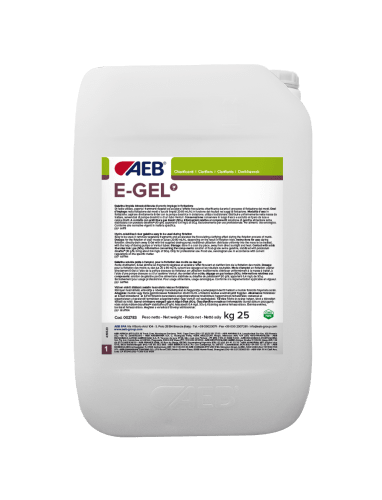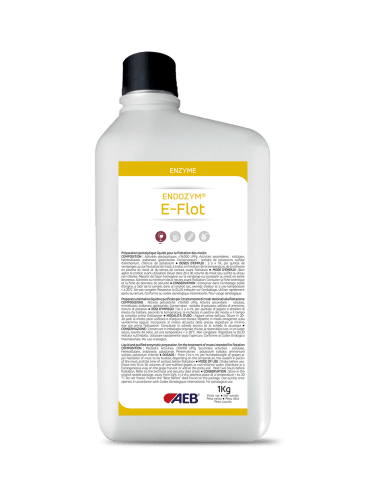FLOTATION
The goal of our group has always been to offer innovative solutions to wine producers. With our range dedicated to flotation, we guarantee the attainment of clear musts, thus optimising clarification time and preserving the quality of the must. The line consists of clarifying gelatins, enzyme preparations and stabilisers designed for use on musts in flotation.
 Filter
Filter
FLOTATION IN WINEMAKING
In the process making wine from grapes suitable for producing white or rosé wines, the liquid part must be separated from the grape residue before proceeding with the alcoholic fermentation of the must. To separate the two, the most commonly used traditional method is cold static sedimentation.
With advances in knowledge and technology, a winemaking process has been developed known as flotation. This process is carried out using a flotation unit, i.e. an instrument that consists of a pump with a chamber in which the must is pressurised and mixed with a gas so that the bubbles which form, transport the solid material upwards, leaving the clarified must in the bottom of the tank. This occurs because the solid parts bind together and, in turn, bind to the gas which rises upwards forming a compact layer.
AEB’s RANGE FOR WINE FLOTATION: STABILISERS AND ENZYME PREPARATIONS
AEB’s range of flotation products features enzyme preparations, which contribute to a quick and complete break-down of the pectins in musts and so, make it easier for the flock to rise during the flotation state thanks to the decrease in viscosity.
To optimise the clarification of must, we propose a stabiliser based on caseinate, PVPP, bentonite and silica gel. It eliminates oxidised compounds and clean up the colour and taste, the protein part and oxidised enzymes, and lastly, the unwanted polyphenolic compounds. The line also includes a food gelatine-based clarifier particularly suited for use during must flotation because, when it comes into contact with polyphenols, it flocculates more quickly compared to traditional gelatin, with the formation of clusters that rapidly incorporate the suspended solids and rising gas.


 CIDER
CIDER

 Brazil
Brazil
 France
France
 Germany
Germany
 United Kingdom
United Kingdom



